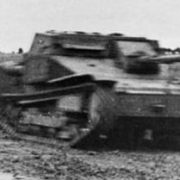Poland purchased the Vickers-Armstrong 6 Ton Mark E from the British, copied it and used it as the basis for their 7TP light tank.
The 7TP weighed 9.4 tons (9,550 kg) and had thicker armor than the Vickers-Armstrong 6-Ton tank.
Earlier versions of the 7TP light tank had twin turrets, each with a 0.312 (7.92mm) machine gun.
Read more
7TP Light Tank













